|
Once again the wheels of publishing grind slowly, but I'm pleased as punch to see one of my book reviews in print again, this time in the Spring 2020 edition of the Agricultural History Journal. Canned: The Rise and Fall of Consumer Confidence in the American Food Industry. By Anna Zeide. Oakland: University of California Press, 2018. 269 pp., $34.95, hardcover, ISBN 9780520290686. Few people these days haven’t tasted canned food, but have you ever considered its origins? Tin cans versus glass jars? The science of safe canning? Anna Zeide did in her new book Canned: The Rise and Fall of Consumer Confidence in the American Food Industry. Tracking the rise of commercially canned foods in America from the condensed milk of the Civil War to modern concerns about bisphenol-A (BPA), Zeide puts canned goods firmly in historical context – connecting them to changes in technology, agricultural science, medicine, politics, and social changes. On the surface, the book is about the safety of canned goods; Zeide studies the roles of lead poisoning, spoilage, botulism, mercury in canned fish, and the 21st century issue of bisphenol-A (BPA) contamination in shaping consumer use of and confidence in canned goods. The chapters are arranged as case studies and are outlined in chronological order. The introduction outlines the history of canning technology (and safety) before moving on to condensed milk in the post-Civil War era and the rise of chemical additives and improvements in canning technology. The chapter on canned peas in the 1910s discusses the relationship between canners, agricultural research, and vertical integration of farming with vegetable varieties bred to be canned, embracing agricultural grading. The chapter on canned ripe olives addresses the threat of botulism in the 1920s, and how the canning industry resisted regulation and attempted to place the blame on careless home canners. The chapter on canned tomatoes in the 1930s outlines how canners resisted grading of canned goods, even as they embraced it for their own suppliers, and attempted to read the mind of “Mrs. Consumer,” now an economic force to be reckoned with. The chapter canned tuna and mercury contamination in the 1970s chronicles the rise of processed food more broadly, the expansion of canners beyond canned food, and the backlash against artificial ingredients, pesticides, and other contaminants in canned goods and industrial food. Finally, Zeide ends with a discussion of consumer fears about BPA in Campbell’s canned soups in the 2010s, and Campbell’s attempts to cover up health concerns even as it tried to appeal to a new, food-savvy generation of consumers. As you can probably tell, beneath the study of the relationship between consumers and food processors is the real meat of the book – on regulation of the industry. At first, early canners were happy to work with government regulators to prove themselves worthy in a crowded and competitive market. And access to agricultural colleges for crop research and federal food safety research were benefits they were only too happy to embrace. But as food processors consolidated and the 20th century wore on, canners became increasingly resistant to government regulation, oversight, and transparency. So much so that by the 2010s when Campbell’s Soup was confronted with consumer concerns about the endocrine disrupting BPA, they closed ranks and denied any safety concerns. But, despite promises to end the use of BPA in can liners and even as it hopped on other bandwagons such as the labeling of genetically modified foods, as of 2016 Campbell’s had yet to replace BPA in their cans. Zeide concludes the book by outlining why government regulation and collective action is more effective in maintaining food safety than the industry’s beloved individual action. Throughout the book, food processors claim that “Mrs. Consumer” can choose for herself which brands are the safest and highest quality, but that ignores circumstances beyond consumer control, such as the case study Zeide cites in which consumers fed on a diet devoid of canned goods and full of locally produced whole foods actually saw their BPA levels increase, likely due to the use of BPA in plastics used as part of the even minimal food processing, such as in the milking industry or in the production of spices in other countries (p. 183). Ultimately, Zeide tries to place canned goods briefly in context in the conclusion – that access to canned fruits and vegetables gave a whole subset of Americans access to nutrients they might not have had access to before, and that emotional responses to the foods of our childhoods will give canned goods longevity. Although at various places throughout the book Zeide makes mention of potential class issues surrounding canned goods, and the assumptions of canners that “Mrs. Consumer” was white and middle class, a more thorough examination of class and race in the context of canned goods would have made this book even stronger, especially considering the emphasis on consumer marketing. However, despite this omission, Canned is ultimately a strong addition to food historiography and I applaud Zeide for her detailed work and her ability to place events and people in context, drawing connections and conclusions that are well supported by her research. If you enjoyed this book review, please consider becoming a member or joining us on Patreon. Members and patrons get special perks like access to members-only content and discounts on programs and classes.
2 Comments
Okay folks, just 6 months after submitting and 9 months after receiving the invitation and book, my review of Capitalist Pigs is finally in print in the latest issue of Agricultural History - the journal of the Agricultural History Society. It's a pretty great issue, so I recommend you check out the few articles they have put up online. Alas, my review is not one of them, BUT! Being the rebel that I am, and seeing that I wrote this review for free (albeit in exchange for an advanced copy of the book, which was pretty cool), I'm going to do you a solid and post it here for you to read for yourself. For photographic proof, click through the images above! Capitalist Pigs: Pigs, Pork, and Power in America. By J.L. Anderson. Morgantown: West Virginia University Press, 2018. 300 pp., $34.99, paperback, ISBN 978-1-946684-73-8. “Capitalist pigs” is a term most frequently attributed to stereotypical Soviet protagonists describing Americans, or perhaps fat hogs in suits and top hats representing greedy businessmen in political cartoons. But in Capitalist Pigs: Pigs, Pork, and Power in America, J.L. Anderson puts a clever turn on the phrase as he explores the role of pigs and pork in America from the early Colonial period to the present. In Capitalist Pigs, Anderson argues that hogs have played a unique role in the development of the United States, and that the United States played a unique role in the development of the hog. “Americans maximized opportunities for the proliferation of the hog, even amid changing values and ideals about empire, agriculture, cities, and health.” (5). In particular, Anderson emphasizes that the story of the hog in America is one of excess, as farmers and marketers alike attempted to “transcend limits” on production. Capitalist Pigs covers the Colonial period to the present in the United States and is organized thematically rather than chronologically. Anderson covers such topics as free-range hogs and their influence on early settlements, pork consumption and its shifting role from frontier and working class food to re-branded “other white meat,” early industrialization of pork production and husbandry, including a discussion of hog cholera and enclosure, the role of the hog as garbage disposal, from our earliest urban areas to the industrialized present, and finally with a discussion of the modern industrialization of the hog, including changing its very physique to match modern consumer tastes and the controversial rise of confined animal feeding operations (CAFOs). Capitalist Pigs is well-researched and the broad chronology of the book provides a sweeping view of the influence of the hog on American culture and development throughout the centuries, giving needed context to historians of all stripes. Anderson is at his most compelling when he includes the voices of marginalized people and his sections on indigenous populations, enslaved people, and the Civil Rights movement are among his best. For urban and environmental historians, the discussion of the role of hogs in reshaping the landscape and the transition of urban spaces to exclude them, even as they continued to operate as waste disposal systems, will be of particular interest. Twentieth century historians, particularly agriculture historians, will be impressed by his discussion of the industrialization of hog production and marketing from the 1940s on. Anderson’s background as a public historian means his writing is clear, straightforward, and free of jargon and unnecessarily convoluted sentences. His writing style is engaging and would appeal to not only professional historians, but likely students and laypeople as well. Although Anderson’s writing style is clear, his main arguments are not. It seems as though Anderson could not quite decide whether to write Capitalist Pigs as a more technical agricultural history, or as a social history, and decided to split the difference. Anderson notes the influence of pigs in the institution of slavery, subsistence farms, and as a “mortgage lifter.” But the primary argument outlined in the introduction is focused instead on how Americans changed the pig. An interesting, if somewhat divergent take from the usual social history bent of most food histories, the argument is ultimately a weak one. Although Anderson discusses extensively in the latter half of the book how farmers industrialized and economized pork production and even changed the body shape of pigs to accommodate changing consumer tastes, he spends little time discussing the effects on the pigs themselves. Although breeding is mentioned frequently, the only mention of any particular breed in the entire book is about how heritage breeds have become more fashionable in modern nose-to-tail cuisine and sustainable agriculture (172-73), despite the fact that discussing the various breeds of pig throughout the book would have lent weight to later industrial changes and changing consumer tastes. He also skirts around the effects of industrialization on the hogs themselves - only in a photo caption does he mention accusations of cruelty in hog confinement operations (201). In addition, although the title and discussions in several chapters imply that hogs played a significant role in building America’s capitalist system, Anderson does not quite make those connections clear throughout the chapters, and discussion of meat-packing beyond the 1850s is conspicuously absent. Given the influential role of America’s meat-packers in the late nineteenth century in both industrial capitalism and union history, this is a curious oversight. Although Capitalist Pigs doesn’t quite live up to the premise of its fantastic title, it is a worthy combination of agriculture and food history - combining the history of industrial technology and consumer uses of hogs throughout the entirety of American history. Food and agriculture historians in particular will find much of use, but American social, environmental, rural, urban, and Civil War historians will also enjoy the read. If you enjoyed this book review, consider becoming a member of The Food Historian! You can join online here, or you can join us on Patreon. Members get access to members-only sections of this website, special updates, plus discounts on future events and classes. And you'll help support free content like this for everyone. Join today!
|
AuthorSarah Wassberg Johnson has an MA in Public History from the University at Albany and studies early 20th century food history. Archives
July 2024
Categories
All
|
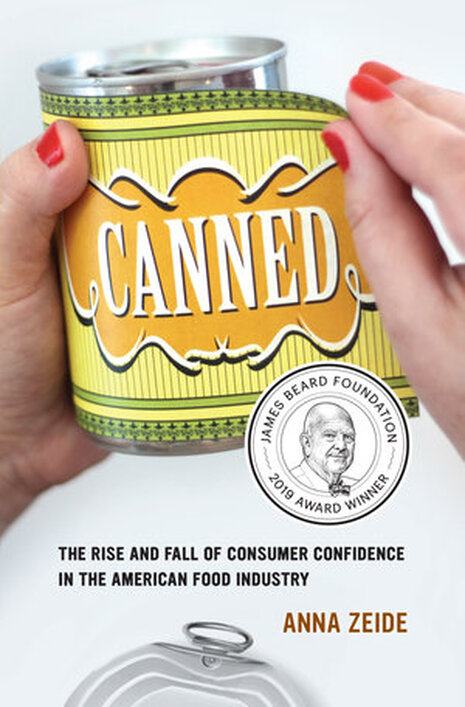

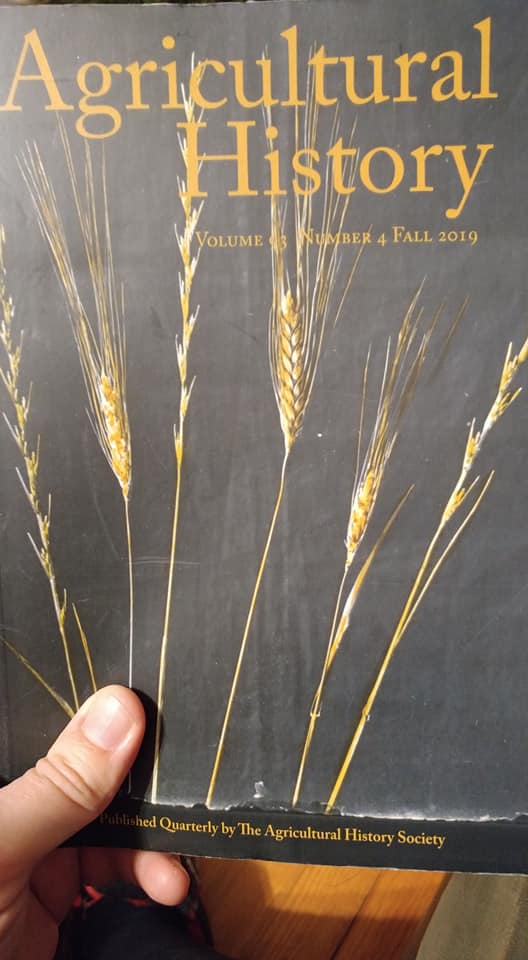
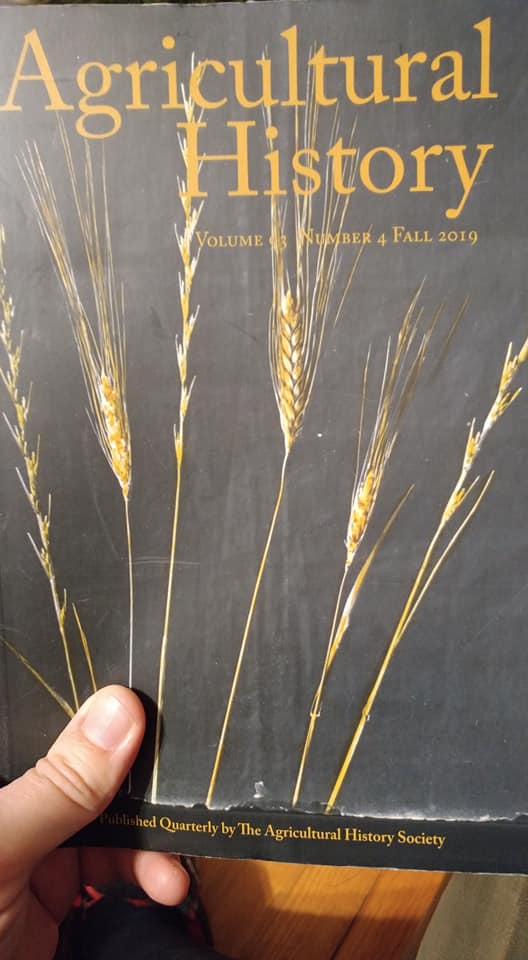
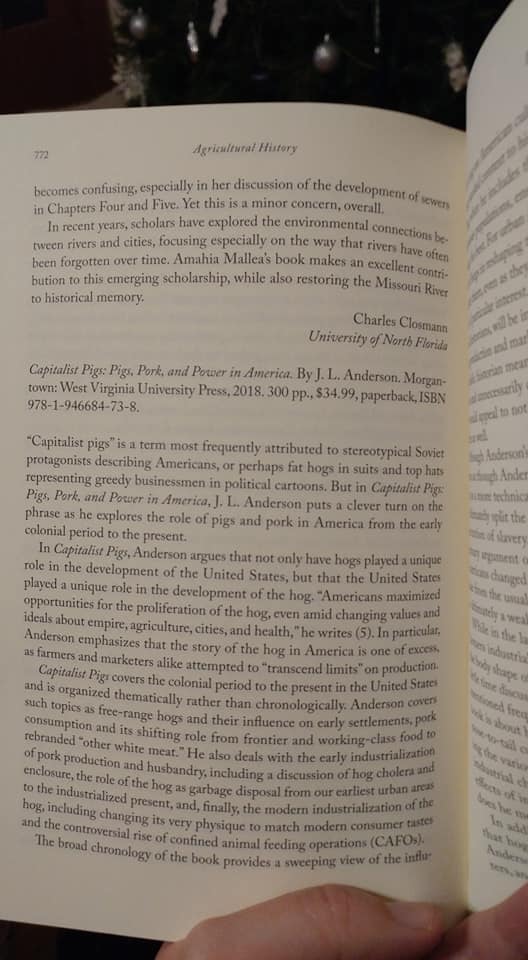
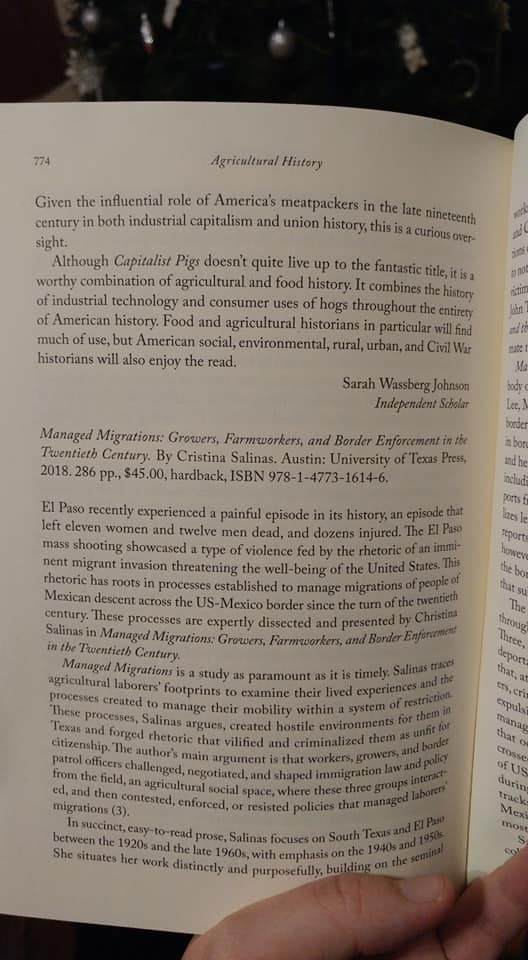


 RSS Feed
RSS Feed